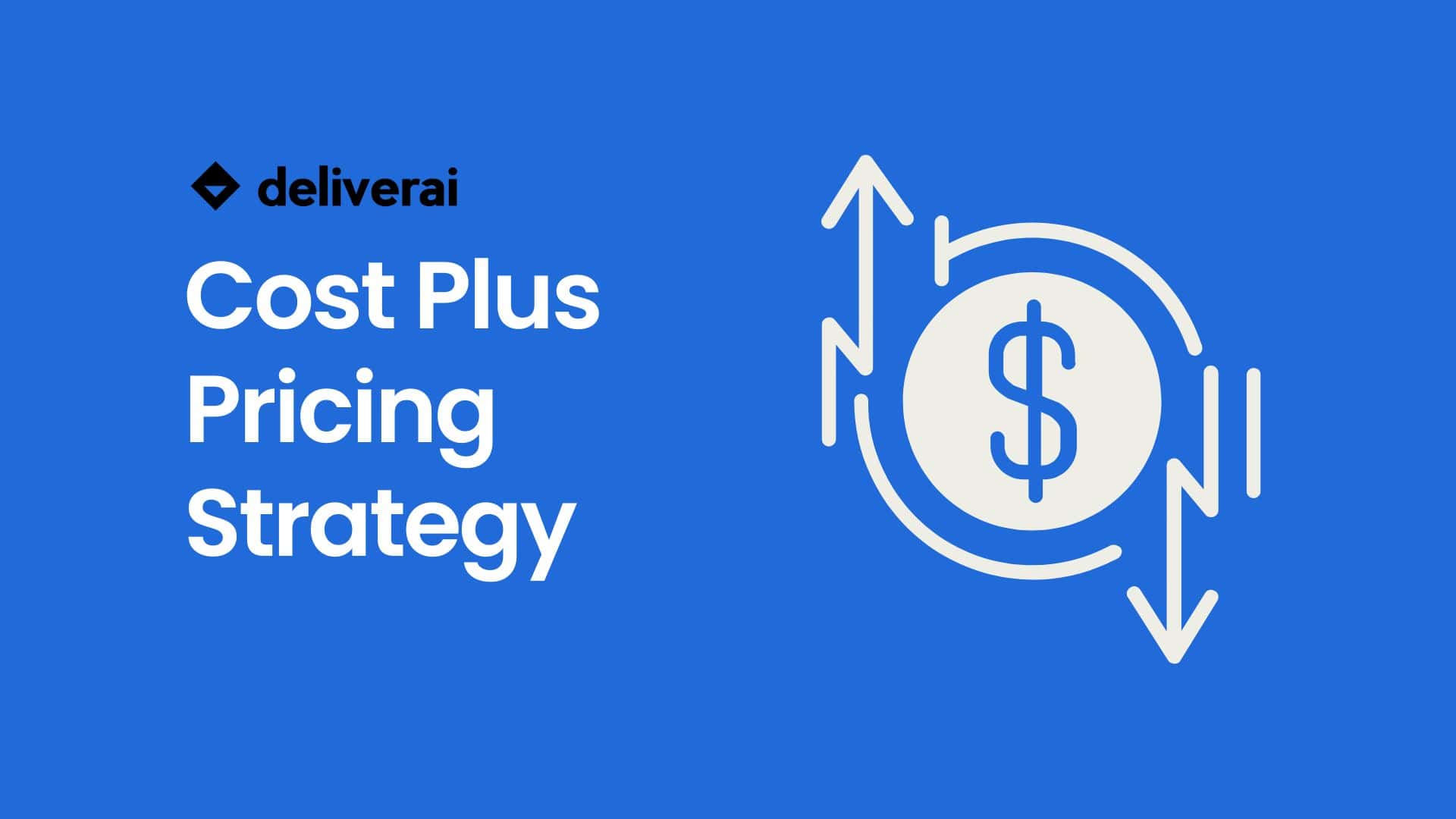Implementing an effective pricing strategy is essential for businesses seeking to maximize profits and streamline pricing processes. One such strategy that accomplishes these goals is cost-plus pricing.
This approach, also known as markup pricing, involves adding a fixed percentage to the unit cost to determine the selling price. By focusing on production costs and disregarding competitor prices, cost-plus pricing offers a straightforward and consistent method for setting prices.
While commonly used by retail stores, it should be noted that cost-plus pricing may not be suitable for all industries, particularly those in the SaaS sector. Nonetheless, for retail establishments, this pricing approach provides a simple and justifiable way to determine selling prices, enabling easier price adjustments and ensuring a stable rate of return.
In this article, which is part of our pricing guide, we will delve into the intricacies of cost-plus pricing, including its calculation formula, practical examples, and the advantages and disadvantages associated with its implementation. By understanding cost-plus pricing, businesses can leverage this strategy to optimize profits and streamline their pricing processes.
Key Takeaways
- Cost-plus pricing focuses on production costs and adds a fixed percentage to determine the selling price.
- It is commonly used in retail stores and the manufacturing industry to ensure cost coverage and profitability.
- Cost-plus pricing simplifies the pricing structure and justifies price changes based on actual costs.
- However, it may set the selling price too high, lacks incentives for operational efficiency, and may not be suitable for service-based businesses or industries with competitive pricing.
Cost-Plus Pricing: An Overview
Cost-Plus pricing is a straightforward pricing method that focuses on production costs and is commonly used in retail stores. It is also known as markup pricing, where a fixed percentage is added to the unit cost to determine the selling price.
Unlike value-based pricing, which considers customer perception and the perceived value of a product, cost-plus pricing solely relies on the production cost. This method is commonly used in the manufacturing industry as well, where costs such as material, labor, and overhead are taken into account.
However, cost-plus pricing has its limitations. It may set the selling price too high, not cover all costs, and lacks incentives for operational efficiency.
Despite these drawbacks, cost-plus pricing remains popular due to its simplicity and the ability to justify price changes.
Implementing a Cost-Plus Pricing Strategy
To effectively implement a cost-plus pricing strategy, businesses must carefully consider their production costs and pricing objectives. This approach involves adding a fixed percentage to the unit cost to determine the selling price, disregarding competitor prices.
While cost-plus pricing can be a simple and straightforward method, it does have its challenges. For service-based businesses, determining the unit cost can be more complex as there may not be tangible products to calculate costs against. Additionally, cost-plus pricing may not be the best fit for all businesses, such as SaaS companies, where pricing is often based on value or usage.
Despite these challenges, cost-plus pricing can still be a useful strategy for businesses looking to simplify their pricing structure and ensure they cover their costs while maintaining profitability.
Calculating Selling Price With Cost-Plus Formula
When calculating the selling price using the cost-plus formula, businesses can determine the final price by adding a fixed percentage to the unit cost. This formula is commonly used in manufacturing businesses to set prices for their products. However, it is important to note that cost-plus pricing may not be suitable for all types of businesses, such as service-based industries.
To illustrate the concept, consider the following table:
| Cost Component | Amount |
|---|---|
| Material Cost | $10 |
| Labor Cost | $5 |
| Overhead Cost | $3 |
| Markup Percentage | 20% |
Using the cost-plus formula, the selling price can be calculated as follows:
Total Cost = Material Cost + Labor Cost + Overhead Cost = $10 + $5 + $3 = $18
Selling Price = Total Cost x (1 + Markup Percentage) = $18 x (1 + 0.20) = $21.60
Applying Cost-Plus Pricing to Retail Stores
Retail stores commonly employ the cost-plus pricing strategy to determine the selling price of their products. This pricing method is particularly popular in the fashion industry, where retailers add a fixed percentage markup to the production cost of their items. By doing so, they ensure that all costs, including materials, labor, and overhead, are covered, while also generating a profit.
Cost-plus pricing is also applicable to online retailers, who use it to determine the selling price of their products. However, it is important for retailers to carefully consider the markup percentage to avoid setting the selling price too high, which can negatively impact sales.
Additionally, cost-plus pricing may not incentivize retailers to operate efficiently, as it does not take into account competitive pricing or market demand.
Limitations of Cost-Plus Pricing Strategy
One major limitation of the cost-plus pricing strategy is its inability to account for competitive pricing or market demand. While cost-plus pricing may provide a simple and consistent approach to setting prices, it does not take into consideration the selling price challenges that businesses may face in competitive markets.
In industries where there is intense competition, customers often compare prices before making a purchase decision. This means that businesses using cost-plus pricing may find it challenging to compete if their selling prices are higher than those of their competitors.
Additionally, cost allocation issues can arise when using cost-plus pricing, as it may not accurately reflect the true costs associated with producing a product or service. This can result in prices that do not cover all costs, leading to lower profitability for the business.
Advantages of Using Cost-Plus Pricing
The advantage of using cost-plus pricing is that it provides businesses with a simple and consistent approach to setting prices. Unlike competitive pricing, which considers market rates, cost-plus pricing focuses on calculating profitability based on production costs. This method allows businesses to determine a fixed percentage to add to the unit cost, resulting in the selling price.
By incorporating all costs, such as materials, labor, and overhead, into the pricing formula, companies can ensure that their prices cover expenses and deliver a consistent rate of return. Additionally, cost-plus pricing allows for easy justification of price changes, as they are based on actual costs rather than market fluctuations.
Optimizing Profitability With Cost-Plus Strategy
To optimize profitability with the cost-plus strategy, businesses can strategically calculate and adjust their prices based on production costs. This approach allows companies to ensure that all costs are covered while still generating a profit. For service-based businesses, the cost-plus strategy involves considering the labor, overhead, and material costs associated with providing the service. By accurately assessing these costs and applying a suitable markup, service-based businesses can set their prices in a way that maximizes profitability. On the other hand, manufacturing companies can utilize cost-plus pricing to factor in the costs of raw materials, labor, and overhead expenses in their pricing decisions. By doing so, they can ensure that their selling prices adequately reflect their production costs, leading to optimized profitability.
| Cost-Plus Strategy for Service-Based Businesses | Cost-Plus Pricing for Manufacturing Companies |
|---|---|
| – Considers labor, overhead, and material costs | – Factors in raw materials, labor, and overhead expenses |
| – Pricing based on service delivery costs | – Pricing based on production costs |
| – Maximizes profitability | – Ensures that selling prices reflect production costs |
Cost-Plus Pricing in Different Industries
Cost-plus pricing is a versatile strategy that can be applied across various industries to effectively determine selling prices based on production costs.
In the manufacturing industry, cost-plus pricing is commonly used to calculate the selling price of goods. It takes into account the material, labor, and overhead costs incurred during production. By adding a markup percentage to these costs, manufacturers can ensure that they cover all expenses and generate a profit.
On the other hand, cost-plus pricing can also be applied in service industries. Service providers, such as consulting firms or professional services, can use this strategy to determine the price of their services. Similar to manufacturing, the costs associated with providing the service, such as labor and overhead, are taken into consideration. By adding a markup percentage, service providers can ensure that they cover their costs and earn a profit.
Example of Cost-Plus Pricing
There are many effective examples of cost-plus pricing being used. Some of the most popular retailers that use cost-plus pricing are Costco, Tesla, and many large businesses but there also small marketing companies, engineering firms, and local coffee shops that use cost-plus pricing to deliver the best prices to their consumers while making a profit.
Costco’s Cost-Plus Pricing
Costco implements cost-plus pricing, ensuring production or purchase costs are covered with a modest profit margin. They typically profit between 14-15% on brands and their private label, Kirkland Signature. This results in lower prices for consumers, as Costco’s involvement in supply chain processes allows for reduced costs. Costco’s strategy also includes exclusive products and a members-only consumer base, contributing to a competitive advantage in the retail industry.
Cost-Plus Drugs
Mark Cuban’s Cost Plus Drugs aims to significantly reduce prescription drug costs. They achieve this by adding a flat 15% markup over their cost, plus pharmacy fees. This transparent pricing model is designed to offer lower prices to consumers by cutting out intermediaries and focusing on the actual cost of drugs plus a reasonable profit margin. This approach brings more visibility into drug pricing and challenges the traditional, often opaque pricing strategies in the pharmaceutical industry.
Everlane
This apparel brand is known for its transparency in pricing. Everlane discloses the cost of making each of its garments and applies a markup, which is typically lower than the industry average. This practice allows them to maintain competitive pricing while highlighting the value they offer to consumers.
Engineering Projects
Cost-plus pricing is commonly used by companies that produce custom products, such as engineering firms, when determining a reasonable market price is challenging. For instance, in the case of a defense contractor working with the government to build a new fighter jet, they might assume a cost to build the jet and add a profit margin, say 10%, to establish the selling price.
This approach, while straightforward in concept, can be complex in practice, as it requires careful consideration of which costs to include, such as variable product costs, fixed manufacturing overhead, and selling costs. The specific costs included in the price are typically determined through negotiations between the buyer and seller and should be clearly defined in the agreement.
Conclusion
In conclusion, implementing a cost-plus pricing strategy can be a valuable tool for businesses in the retail industry.
By focusing on production costs and disregarding competitor prices, this approach provides a straightforward and consistent method for setting prices.
While it may not be suitable for all types of businesses, cost-plus pricing offers a simple and justifiable method for determining selling prices, allowing for easier price adjustments and providing a stable rate of return.
By understanding its intricacies, businesses can optimize profits and streamline their pricing processes.







